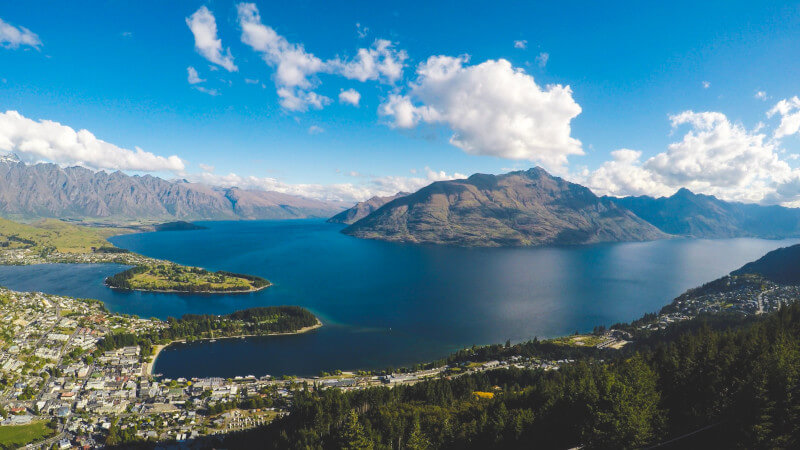In the far corner of the world, tucked away in the scenic landscapes of New Zealand, an exciting and invigorating movement is taking root: the craft whisky industry. The rise of Kiwi distilleries piqued my interest, leading me to delve into the intricacies of this emergent trend.
The Kiwi Whisky Landscape
When you think about whisky, New Zealand might not be the first place that comes to mind. Previously overshadowed by Scotland, the United States, and Japan, the country is finally developing its whisky character. Wanaka’s Whisky Works and Auckland’s Thomson Whisky are at the forefront of this movement, producing award-winning spirits by fusing traditional methods with modern innovations inspired by New Zealand’s agricultural past.
I recall the first time I sampled a single malt from The New Zealand Whisky Collection. The subtle ways in which regional factors had an impact on the flavor were readily noticeable. Music that evokes the clean air, verdant fields, and salty sea breezes of the country.
International Distillers Weigh In
New Zealand’s craft whisky movement hasn’t escaped the attention of global distillers. Many have taken note and expressed admiration for the strides the Kiwi industry is making.
Ian Chang, a master distiller from Taiwan’s Kavalan Distillery, mentioned in a recent interview, “The vibrancy of New Zealand whiskies, influenced by their unique terroir, is genuinely impressive. It reminds me of the early days of Taiwanese whiskies – full of potential and bursting with character.”
Over in Scotland, where the whisky tradition runs deep, there’s been a nod of acknowledgment. Ewan Henderson of Ardbeg Distillery said, “It’s always refreshing to see young industries push boundaries. New Zealand distilleries are doing just that, and I’m keen to see where they head next.”
Their Craft Terroir and Technique

A significant factor in the distinctiveness of New Zealand whisky is its unparalleled terroir. With a climate that swings between the balmy beaches of the North Island and the snowcapped peaks of the South, the country’s distilleries have a rich palette from which to draw.
A highlight for me was a special dram from Cardrona Distillery. The distillery’s use of pure alpine water, combined with maturation in the high-altitude climate, imparts a freshness that is hard to find elsewhere.
Unearthing the Terroir
Terroir, a term often associated with wine, is equally relevant in the whisky world. It refers to the natural environment where the drink is produced, encompassing everything from the soil and climate to the water source. In New Zealand, this translates to:
- Diverse Climates: From the warm and humid North Island to the colder terrains of the South, distilleries strategically select their location to influence the whisky’s character.
- Pure Alpine Water: Many distilleries, like Cardrona, source water directly from alpine streams. This pristine water lends clarity and purity to the whisky, forming a clean canvas upon which other flavors can dance.
New Zealand’s Secret Sauce
The innovative techniques employed by local distillers amplify these natural advantages:
- Indigenous Grains: Instead of merely importing grains, some distilleries are tapping into local varieties. These grains, grown in New Zealand’s rich soils, bring a unique profile to the table, different from anything you might taste elsewhere.
- Barrel Experimentation: Beyond the traditional oak barrels, there’s a move towards using native woods for maturation. Manuka wood barrels, for instance, impart a subtle sweetness and smokiness to the whisky, making it distinctly Kiwi.
- Dynamic Maturation: The variation in New Zealand’s climate plays a pivotal role. Distilleries in coastal regions, for instance, produce whiskies with a hint of salinity, a nod to the nearby ocean.
- Collaborative Brews: Building bridges with local wine and beer producers, some distilleries are experimenting with dual maturation processes. Whiskies aged in wine casks, especially those from New Zealand’s famed wine regions, exhibit fruity and floral notes that are both refreshing and unique.
If you’re itching to get a taste of what the Kiwi land has to offer, we’ve got your back! These selections stand tall, showcasing the incredible blend of terroir and pioneering techniques above:
- Cardrona Single Malt Whisky: Nestled in the scenic Otago region, Cardrona distillery brings forward a whisky that’s as pristine as the alpine waters they use. You’ll notice hints of honey, vanilla, and a subtle smokiness, making it a must-try for those keen on experiencing the purity of New Zealand’s terrain.
- Thomson Whisky’s Manuka Smoke: Thomson Whisky takes innovation to the next level by using Manuka wood chips for smoking, a native New Zealand tree. The result? A whisky with a gentle smokiness intertwined with sweet undertones. It’s a sip that captures the essence of New Zealand’s native forests.
- Willowbank 10-Year-Old DoubleWood: A product of the South Island, this whisky is matured in both bourbon and New Zealand red wine casks. This dual maturation process introduces delightful fruity and floral notes, making it a genuine representation of the country’s collaborative brew spirit.
- The Oamaruvian – New Zealand Whisky Collection: Produced in Oamaru, this whisky gives you a taste of New Zealand’s dynamic maturation, influenced by the coastal environment. Expect a rich, full-bodied flavor profile with a hint of sea salt.
- Lammerlaw Single Malt: Coming from the Dunedin region, Lammerlaw is a nod to traditional Scottish-style whiskies but with a Kiwi twist. It’s crafted using local barley and exhibits a balanced taste with hints of toffee, fruit, and a touch of peat.
Gaining Ground on the World Stage
New Zealand’s artisan whiskies have been making ripples in the international market despite being a relatively new industry. Many people have taken note of New Zealand wine because it has done so well in blind tastings and competitions.
Jack Teeling, the Irishman who started the Teeling Whisky company, and I had a great chat. It’s amazing to see products from different parts of the world being offered to the rest of the world, he remarked. New Zealand’s craft whiskies merit all the praise they’re getting. The honesty and candor in their expressions are palpable.
They’re Quite Promising and Show a Lot of Potential
New Zealand’s artisanal whisky industry is only getting off the ground, but it promises great things. To someone like myself, who has spent years studying about and enjoying whiskies from all around the world, the emergence of New Zealand whisky is more than a fad; it’s an exciting new chapter in the history of whisky.
But, like with any emerging field, there will be challenges to be met. There are several obstacles facing New Zealand’s distilling sector, such as the necessity to keep quality constant and the pressure to stand out in a crowded global marketplace. Despite this, I am optimistic about the future of Kiwi Whisky since I have seen the passion, innovation, and perseverance personally.

